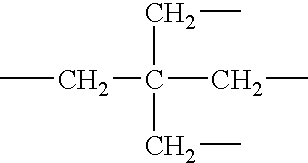Gas-barrier film and environment-sensitive device
a technology of gas-barrier film and environment-sensitive device, which is applied in the field of gas-barrier film, can solve the problems of poor gas-barrier property of the film when folded, poor practicability, and insufficient capability, and achieve excellent gas-barrier property, excellent durability, and excellent gas-barrier property
- Summary
- Abstract
- Description
- Claims
- Application Information
AI Technical Summary
Benefits of technology
Problems solved by technology
Method used
Image
Examples
example 1
Production and Evaluation of Gas-Barrier Film
[0110]Gas-barrier films (samples Nos. 1 to 7) were produced according to the process mentioned below, each having an organic layer and an inorganic layer formed on a plastic film of a flexible supporting substrate. The details of the constitution of each gas-barrier film are shown in Table 3. As the plastic film, used was a polyethylene naphthalate film (PEN, thickness 100 μm, Teijin-DuPont's Q65FA).
(Formation of Easy-Adhesive Layer)
[0111]Only in the sample No. 4 shown in Table 3, a two-layered easy-adhesive layer was formed on the plastic film according to the following process.
[0112]A dispersion prepared by dispersing a polyester resin binder (Dai-Nippon ink Chemical Industry's Finetex ES-650) in water with a surfactant therein was applied onto the plastic film and dried to form a first easy-adhesive layer having a thickness of 200 nm. Next, a dispersion prepared by dispersing an acrylic resin binder (latex of MMA59-St9-2EHA26-HEMA5-AA1...
example 2
Production and Evaluation of Gas-Barrier Film
[0127]A gas-barrier film was produced and evaluated in the same manner as in Example 1, for which, however, a polyethylene terephthalate film (PET, thickness 100 μm, Toray's product, Lumirror T60) was used in place of the polyethylene naphthalate film (PEN) as a plastic film for the flexible supporting substrate. This gave the same results as in Example 1.
example 3
Production and Evaluation of Organic EL Device
[0128](Preparation of Substrate of Organic EL Device) An ITO film-having conductive glass substrate (surface resistivity, 10 Ω / square) was washed with 2-propanol, and then processed for UV ozone treatment for 10 minutes. On the substrate (anode), the following organic compound layers were formed in order by vapor deposition according to a vacuum vapor deposition method.
First Hole Transporting Layer:
[0129]Copper phthalocyanine: film thickness 10 nm.[0130]Second Hole Transporting Layer:[0131]N,N′-diphenyl-N,N′-dinaphthylbenzidine: film thickness 40 nm.[0132]Light-Emitting Layer also serving as electron transporting layer:[0133]Tris(8-hydroxyquinolinato)aluminium: film thickness 60 nm.
[0134]Finally, 1 nm of lithium fluoride and 100 nm of metal aluminium were formed in order by vapor deposition, thereby forming a cathode; and a silicon nitride film having a thickness of 3 μm was formed on it according to a parallel plate CVD method, thereby ...
PUM
| Property | Measurement | Unit |
|---|---|---|
| Length | aaaaa | aaaaa |
| Fraction | aaaaa | aaaaa |
| Thickness | aaaaa | aaaaa |
Abstract
Description
Claims
Application Information
 Login to View More
Login to View More - R&D
- Intellectual Property
- Life Sciences
- Materials
- Tech Scout
- Unparalleled Data Quality
- Higher Quality Content
- 60% Fewer Hallucinations
Browse by: Latest US Patents, China's latest patents, Technical Efficacy Thesaurus, Application Domain, Technology Topic, Popular Technical Reports.
© 2025 PatSnap. All rights reserved.Legal|Privacy policy|Modern Slavery Act Transparency Statement|Sitemap|About US| Contact US: help@patsnap.com



